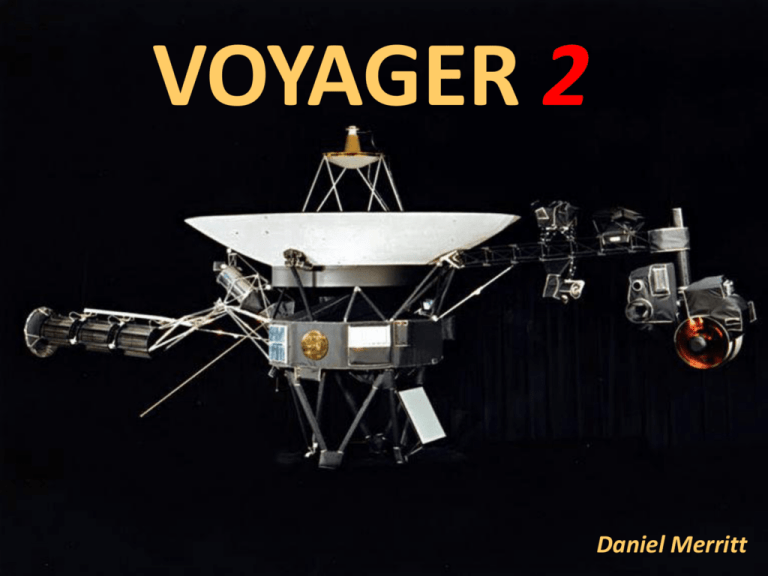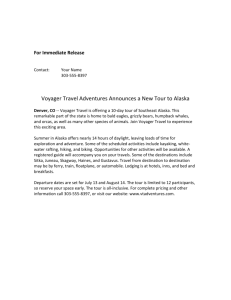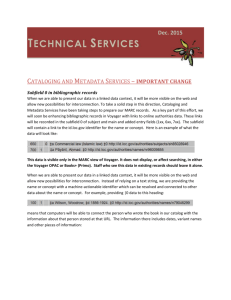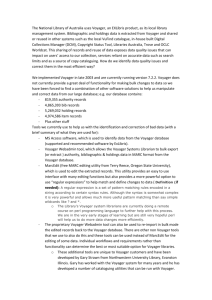voyager 2
advertisement

VOYAGER 2 Daniel Merritt Origins Voyager 2 is an unmanned and still active space probe, currently flying out of our solar system as we speak! launched on August 20th, 1977 Voyager 2 and its sister probe, Voyager 1, were designed, developed, and built at the Jet Propulsion Laboratory in Pasadena, California Launch Issues Voyager 2 was launched using a Titan IIIE rocket During the takeoff, Voyager 2’s on board sensors became “confused” Activating it’s backup sensors, if it had had control over the thrusters, it would have crashed itself trying to correct the trajectory Luckily, the issue was resolved moments before the separation More Issues However, it continued to sense phantom emergencies only 1 hour after launch Voyager 2’s on board thrusters were activated as it attempted to locate the sun with a light sensor for orientation purposes The worst result of the frantic computer activity was the activation of the fault protection, the last line of defense in case of a deep space trajectory malfunction Although the probe recovered control, it was running on backup sensors, backup radio receivers, and could no longer activate the emergency fault protection, if needed So far, there have been no major issues beyond that exciting launch day Voyager 2 utilized the gravity slingshot method to catapult itself to the furthest planets and eventually beyond the Heliosphere That configuration of the planets only occurs once every 176 years! Major Discoveries: Jupiter The Great Red Spot is a persistent storm complex rotating counter clockwise New rings Three new satellites The most exciting discovery is that of active volcanism on the moon Io; the first of it’s kind observed in the solar system! Major Discoveries: Saturn Voyager 2 was primarily concerned with radiography and density mapping of Saturn’s atmosphere Possible seasonal polar temperature differences were detected The average temperatures at various depths were also recorded After a slight camera lubricant issue, it was cleared to move on to Uranus Major Discoveries: Uranus Discovered 10 previously unknown moons of Uranus Studied the planet's unique atmosphere, caused by its axial tilt of 97.8° Examined the Uranian ring system Examined the corkscrew magnetic field effects Major Discoveries: Neptune Discovery of the Great Dark Spot Studied the planet's atmospheric composition Heavily examined the previously known moon, Triton, in great detail Found that the Planet X Effect was in fact caused by a miscalculation of Neptune’s mass, 0.5% too high (about the mass of Mars) 12 years? Is that all? Voyager 2 completed it’s last planetary flyby in 1989 It flung itself out into deep space, south of the ecliptic Continuing to float through space, momentum uninhibited by pesky forces, Voyager 2 commences its final task; attempting to leave the Heliosphere, and the entire solar system On August 30th, 2007 Voyager 2 passed the termination shock into the Heliosheath So now what? Voyager 2 is expected to keep transmitting weak radio messages until at least 2025, over 48 years since it was launched As of April 13, 2010, Voyager 2 was at a distance of around 91.898 AU from the Sun, and traveling outward at roughly 3.264 AU per year






